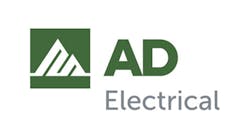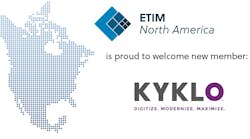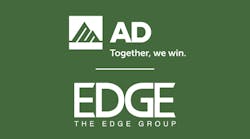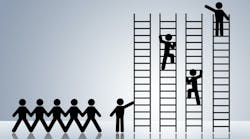Fiber-optic wire, the lighter, leaner cabling that carries preposterous amounts of info, is coming soon to a cable near you.
AFC Cable Systems' Jim Dollins recently saw the true potential of fiber-optic cable while bidding a job for armored cable at a Mississippi casino. The customer was sold on using armored cable for the casino's power wiring, but he wanted a new wiring option for the casino's security, fire-alarm and data cabling needs.
Dollins, vice president of product development at the New Bedford, Mass.-based company, saw a huge sale waiting to happen and worked with his technical people to find a way to wrap fiber-optic cable with armor. The result? A satisfied customer, a very profitable order for tens of thousands of feet of cable and the birth of a new product line for AFC. The armor-clad, fiber-optic cable reduces installation labor by as much as 50%, says Dollins.
New products are just one reason the market for fiber-optic cable is expected to hit $2.52 billion by 2002, according to the Freedonia Group, Inc., Cleveland, Ohio. Telephone lines, cable TV systems and other communications systems will account for the bulk of the sales, but plenty of sales potential exists for electrical-equipment manufacturers, distributors and wire and cable specialists.
Most people in the electrical industry have their eye on the business community's demand for high-speed local-area networks (LANs) consisting of fiber-optic cable, connectors and related products. This end of the marketwill really explode, say many industry observers, when fiber makes the move from being primarily a backbone cable for large networks to linking directly to individual offices. The fiber-to-desk trend is driven by the requirement of PC software applications for more bandwidth on the cabling media that carry the information to the desktop. Several manufacturers, including AFC and AMP, Inc., Harrisburg, Pa., now offer fiber links direct to the desk.
Fiber optics technology is a wonder to behold. When a transmitter sends a signal through a whisker-thin optical fiber, the signal is carried on a beam of light that travels in waves. The number of waves that leave the transmitter per second is the frequency. The higher the frequency, the more information carried. Since light waves have such a high frequency, fiber-optic cable can carry thousands of times more information than current flowing through a copper wire.
A fiber-optic cable the size of an ordinary electrical cord can replace a copper cable hundreds of times thicker. It takes about 200 reels of copper wire to carry the information of one 41/2-lb spool of optical fiber. Copper cables are susceptible to static, which interferes with communication. Because optical fibers carry light beams, they are free of electrical noise and electromagnetic interference (EMI). Recent breakthroughs in fiber technology, such as wavelength division multiplexing (WDM) and optical amplifiers, have made transmission of an incredible amount of information across a single strand of fiber-optic cable possible.
In 1995, Nicholas Negroponte wrote in Being Digital, "We don't know how many bits per second we can send down a fiber. Recent research says we're close to being able to deliver 1,000 billion bits per second. This means a fiber the size of a human hair can deliver every issue ever printed of the Wall Street Journal in less than a second."
A year later, a trillion bits per second were successfully transmitted, error free. Who knows what the future holds?








